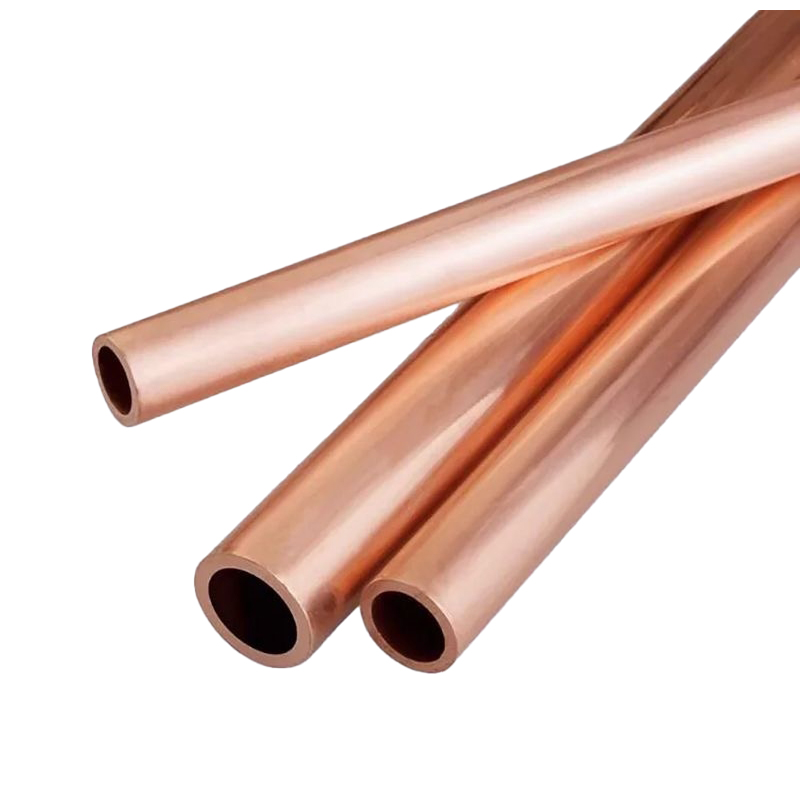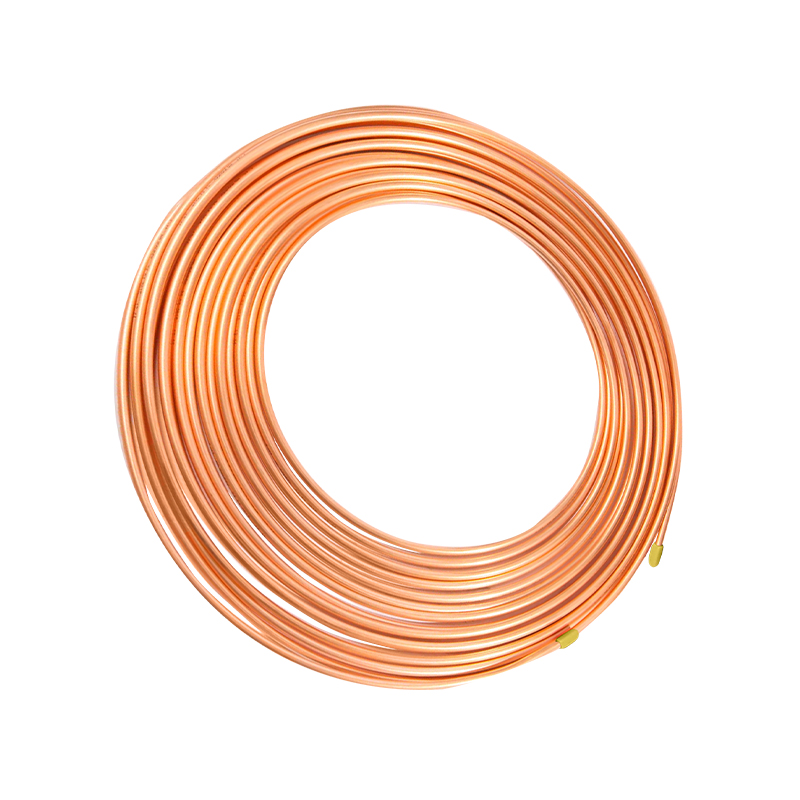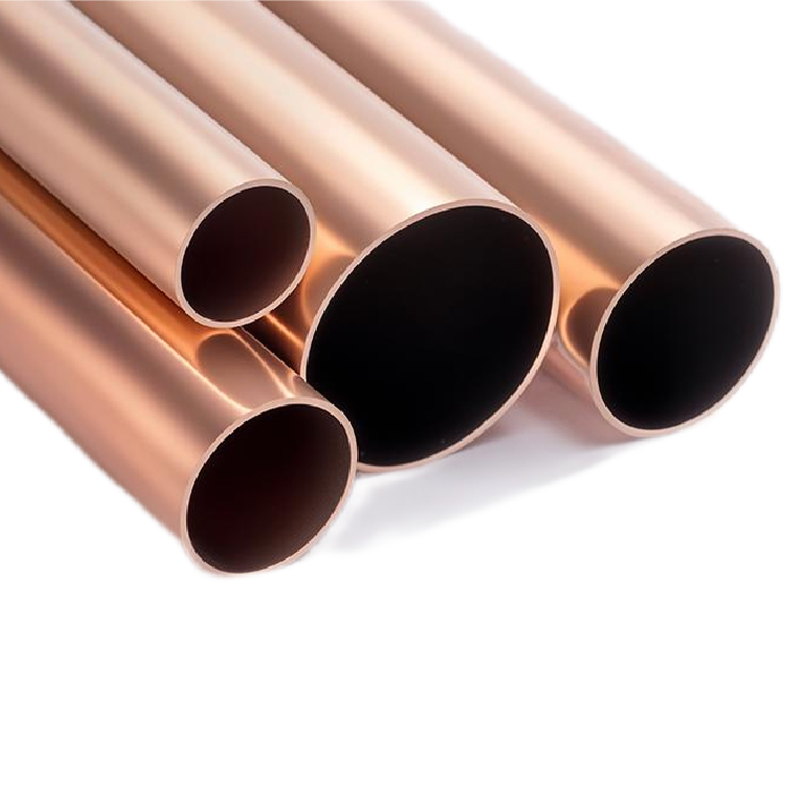
The key role and future development of Heat Exchange Copper Tube in automobile cooling system
With the continuous progress of the global automobile industry, especially the rise of electric vehicles and hybrid vehicles, the technical requirements of automobile cooling systems are getting higher and higher. As one of the core components in the cooling system, heat exchange copper tube has become one of the preferred materials for modern automobile cooling systems due to its thermal conductivity, corrosion resistance and flexible processing.
The basic working principle of automobile cooling system
The main task of the automobile cooling system is to quickly take away the heat generated by the engine during operation to prevent the engine from overheating and causing damage. The cooling system is usually composed of coolant, radiator, heat exchanger, water pump and fan, among which the heat exchanger plays a vital role by exchanging heat with the engine through the circulation of coolant.
The core component of the heat exchanger is the copper tube. Through the heat transfer effect of the copper tube, the coolant can quickly absorb the heat generated by the engine or motor and dissipate it into the air through the radiator, thereby keeping the temperature of the engine or battery pack within a safe range. Copper tubes have become an indispensable key material in modern automobile cooling systems due to their thermal conductivity.
The key role of heat exchange copper tube in automobile cooling system
Excellent thermal conductivity: keep the engine running efficiently
The notable feature of heat exchange copper tube is its thermal conductivity. Copper has the highest thermal conductivity of all metals, which means that copper tubes can quickly transfer the heat generated by the engine or motor from the coolant to the outside air. Especially in high-performance cars and electric vehicles, the heat of the engine or battery pack is very high. If the heat is not dissipated in time, it may cause serious performance degradation or safety hazards. Therefore, heat exchange copper tube plays a vital role in quickly dissipating heat and effectively maintaining temperature.
Compared with other metals such as aluminum or stainless steel, copper tubes have significantly higher heat exchange efficiency and can achieve better heat dissipation in a shorter time, helping the engine or battery to continue to operate under higher loads without malfunctioning due to excessive temperature.
Good corrosion resistance: extend the service life of the cooling system
The automobile cooling system is in a high temperature and humid working environment for a long time, and the various chemical components contained in the coolant will corrode the pipe. Copper tubes have natural corrosion resistance and can effectively resist the erosion of the pipe by various chemicals in the coolant. This enables the copper tube to maintain stable performance for a long time under high temperature and high pressure working conditions, significantly extending the service life of the cooling system.
Compared with aluminum tubes, copper tubes have stronger corrosion resistance and durability, which can reduce the occurrence of leakage, corrosion and other problems during long-term use, thereby ensuring the reliability and safety of the entire cooling system.
Flexible processing performance: Adapt to the design requirements of different models
The processing performance of copper tubes is very superior. It can be processed into various shapes and sizes through precise extrusion, bending and other methods, which enables it to meet the needs of different models and engine layouts. In the engine compartment of some compact cars, the space is limited, and the cooling system design requires a very precise pipeline layout. Due to its good plasticity and machinability, copper tubes can be precisely customized according to actual needs to ensure that the cooling system can still maintain efficient heat dissipation in a limited space.
This feature of copper tubes makes it very popular in cars with complex engine compartment layouts, especially in modern small cars, sports cars and electric cars, where copper tubes can provide more flexible and efficient solutions.
Reduce the weight and volume of the cooling system: improve vehicle performance
With the increasing focus of the automotive industry on lightweighting, especially the requirements of electric vehicles and hybrid vehicles for energy efficiency and endurance, reducing vehicle weight has become one of the keys to improving fuel efficiency and performance. Although copper has a high density, its thermal conductivity is extremely high. Compared with other materials, copper tubes can use smaller pipes while achieving the same heat dissipation effect, thereby effectively reducing the weight and volume of the cooling system.
This not only helps to improve the fuel efficiency of the entire vehicle, but also reduces the space occupied by the cooling system, further improving the overall design flexibility and performance of the vehicle.
Future development trends of heat exchange copper tubes
Further improvement of thermal conductivity efficiency: responding to higher heat dissipation requirements
With the rise of electric vehicles and hybrid vehicles, the cooling system of traditional internal combustion engine vehicles is facing new challenges. The power battery and motor of electric vehicles generate a lot of heat during the charging and discharging process, and an efficient heat dissipation system is required to ensure the stability of the system. In the future, heat exchange copper tubes will pay more attention to improving thermal conductivity efficiency to meet the heat dissipation needs of high-performance vehicles such as electric vehicles. Researching and developing more efficient copper alloy materials and optimizing the microstructure and thermal conductivity of copper tubes will be the direction of future technological development.
Improvement of high temperature resistance and corrosion resistance: ensuring long-term stable operation
With the increase in charging power of electric vehicles and the advancement of battery technology, battery systems will face higher temperature challenges. This requires the cooling system to have higher high temperature resistance. The improvement of copper tubes in this regard will focus on improving their high temperature resistance and corrosion resistance, such as enhancing the oxidation resistance of copper tubes by adding high temperature resistant copper alloys or special coatings, thereby extending the service life and working stability of the cooling system.
Environmental protection and sustainability: recycling and reuse of copper tubes
With the strictness of environmental protection regulations, the sustainability requirements of the automotive industry are increasing. Copper tubes have a high recycling value, and their recycling and reuse efficiency is more prominent than other materials. In the future, heat exchange copper tubes will pay more attention to environmental protection applications, especially reducing energy consumption and optimizing the use efficiency of copper materials in the production process, promoting the full life cycle management and recycling of copper tubes, and further enhancing their status in green manufacturing.
Integration of intelligent cooling system: improving cooling efficiency and management
With the popularization of intelligent cars, cooling systems are also developing towards intelligence and automation. The future automotive cooling system is not just a simple heat exchange device. It will be able to monitor and adjust parameters such as temperature and flow in real time to optimize the cooling process. In this intelligent trend, the heat exchange copper tube will be deeply integrated with sensors and control systems, support real-time data analysis and adjustment, and achieve more refined temperature control management, thereby improving the overall efficiency and reliability of the cooling system.
Product Category
Content
- 1 The basic working principle of automobile cooling system
- 2 The key role of heat exchange copper tube in automobile cooling system
- 2.1 Excellent thermal conductivity: keep the engine running efficiently
- 2.2 Good corrosion resistance: extend the service life of the cooling system
- 2.3 Flexible processing performance: Adapt to the design requirements of different models
- 2.4 Reduce the weight and volume of the cooling system: improve vehicle performance
- 3 Future development trends of heat exchange copper tubes
- 3.1 Further improvement of thermal conductivity efficiency: responding to higher heat dissipation requirements
- 3.2 Improvement of high temperature resistance and corrosion resistance: ensuring long-term stable operation
- 3.3 Environmental protection and sustainability: recycling and reuse of copper tubes
- 3.4 Integration of intelligent cooling system: improving cooling efficiency and management
Related news
-

What is a thick-walled copper tube? Thick-walled copper tube, also known as seamless thick-walled copper tube, is a high-performance metal tube made o...
See Details -

Overview and Importance of Copper Capillary Tube In modern industrial equipment and precision control systems, miniaturization and high precision have...
See Details -

What is a copper tube? Analysis of material composition and basic characteristics Definition of copper tube Copper tube is a tubular object made of co...
See Details -

Understanding Copper Square Tubes: Composition, Grades, and Typical Applications Copper square tubes are specialized extrusions that combine the super...
See Details

 English
English Español
Español